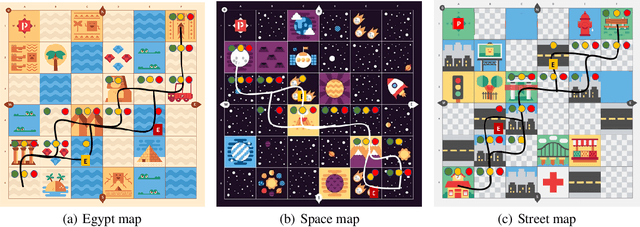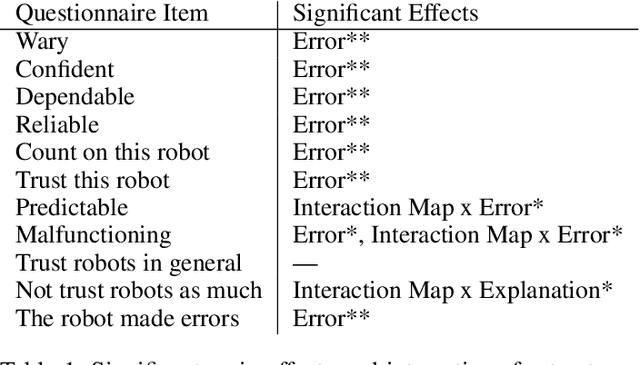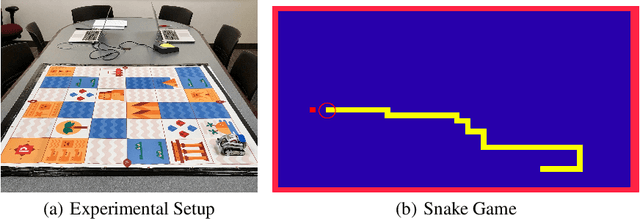Elizabeth J. Carter
Person Transfer in the Field: Examining Real World Sequential Human-Robot Interaction Between Two Robots
Jun 11, 2024



Abstract:With more robots being deployed in the world, users will likely interact with multiple robots sequentially when receiving services. In this paper, we describe an exploratory field study in which unsuspecting participants experienced a ``person transfer'' -- a scenario in which they first interacted with one stationary robot before another mobile robot joined to complete the interaction. In our 7-hour study spanning 4 days, we recorded 18 instances of person transfers with 40+ individuals. We also interviewed 11 participants after the interaction to further understand their experience. We used the recorded video and interview data to extract interesting insights about in-the-field sequential human-robot interaction, such as mobile robot handovers, trust in person transfer, and the importance of the robots' positions. Our findings expose pitfalls and present important factors to consider when designing sequential human-robot interaction.
Impact of Explanation on Trust of a Novel Mobile Robot
Jan 26, 2021



Abstract:One challenge with introducing robots into novel environments is misalignment between supervisor expectations and reality, which can greatly affect a user's trust and continued use of the robot. We performed an experiment to test whether the presence of an explanation of expected robot behavior affected a supervisor's trust in an autonomous robot. We measured trust both subjectively through surveys and objectively through a dual-task experiment design to capture supervisors' neglect tolerance (i.e., their willingness to perform their own task while the robot is acting autonomously). Our objective results show that explanations can help counteract the novelty effect of seeing a new robot perform in an unknown environment. Participants who received an explanation of the robot's behavior were more likely to focus on their own task at the risk of neglecting their robot supervision task during the first trials of the robot's behavior compared to those who did not receive an explanation. However, this effect diminished after seeing multiple trials, and participants who received explanations were equally trusting of the robot's behavior as those who did not receive explanations. Interestingly, participants were not able to identify their own changes in trust through their survey responses, demonstrating that the dual-task design measured subtler changes in a supervisor's trust.
* 9 pages, 3 figures
 Add to Chrome
Add to Chrome Add to Firefox
Add to Firefox Add to Edge
Add to Edge